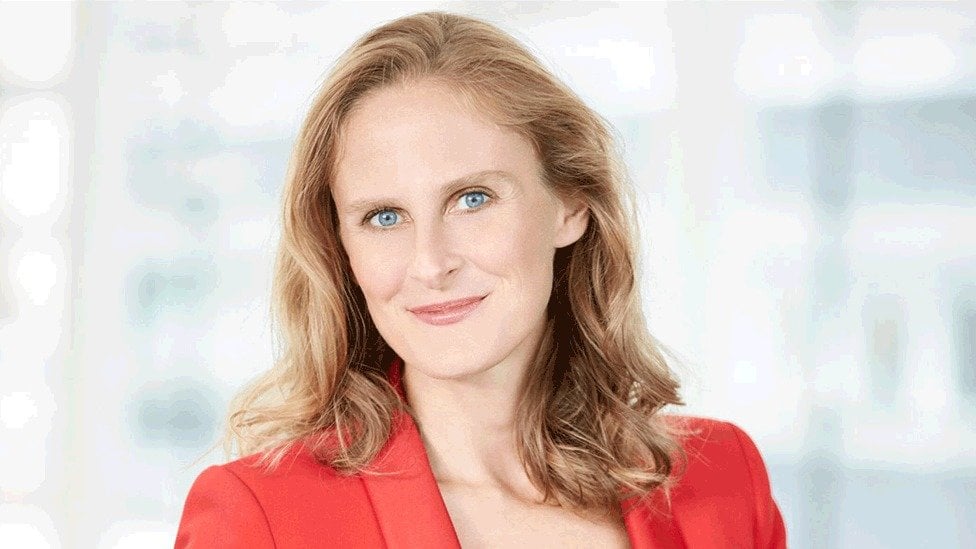“Navigating a world of constant transformation is a permanent revolution” – interview with Lubomira Rochet
Lubomira Rochet, Executive Vice President and Chief Digital Officer, discusses reinventing the beauty experience and the rise of “beauty tech”.

You joined L’Oréal in 2014 as our Chief Digital Officer. Can you please tell us something about your background?
I trained as an economist. Studying for my post-graduate degree at Berkeley, I was fully immersed in the new technology ecosystem: my career has been in digital. I joined L’Oréal from Valtech, a pioneering technology company, where I was Deputy CEO and Managing Director for Southern Europe.
I previously worked at Microsoft and at Capgemini. My career has focused on transformational initiatives and turnarounds and I brought that experience to L’Oréal.
Please describe your role – how have you have developed it?
My role is to drive and orchestrate L’Oréal’s digital transformation. Seven years ago, 2% of our total sales were through ecommerce. Today, it’s growing at more than +50%. We achieved this through teamwork and training, upskilling 32,500 staff to digital, data-driven marketing and agile working. We are increasingly data-driven and personal, embracing influencer marketing and new creative formats to achieve our goal – to “bring beauty to all”.
Digital has been super instrumental in reaching a new generation of customers. Through the incredible work of our teams worldwide, L’Oréal operates as a digital native company but at the scale of a leader in its field. Worldwide, we’re rolling out our new organizational model, Marketing 3.0, to craft the best customer experiences through products, content and services.
We have built a unique data analytics platform operating in real time, showing us the performance of all our brands in all our countries across the digital marketing spectrum. This helps local marketers to make the right planning and investment decisions. We never say arbitrarily, “You should be investing in x y z.” It’s always based on local media consumption, by country and category.
We’re preparing for the future through powerful technologies - voice, augmented reality and artificial intelligence. We acquired ModiFace, an AI/AR market leader. We’re accelerating the development and rollout of virtual make-up and hair try-ons, online AI-based skin diagnostics and livestreaming with beauty assistants. Digital and beauty are a perfect match.
What are your greatest digital challenges?
The European GDPR was a wake-up call for our industry. It started the ball rolling. It was the end of the era of “exorbitant privilege” for the big data platforms. What it meant for us, here at L’Oréal, was that we had to rethink our strategy and move towards permission-based marketing, solving problems for our customers through beauty services.
A challenge for brands and for all our institutions is the decline of trust. People are bombarded daily with thousands of messages. “Digital burnout” is a conversation topic. Google it and you’ll get 36 million results. People are craving authenticity. This explains the rise of grass roots peer-to-peer new platforms deemed more authentic and more real such as TikTok, but also Twitch or Reddit. We must be in the pulse of innovation with our brands and communicate with people in a way that “stops the feed”.
What are your greatest digital opportunities?
We are a digital first business. Our digital transformation continues at breakneck speed. Our marketing has people and communities at its heart. Only the best beauty experiences and services will engage new customers, earn their trust and deserve their attention.
AI and machine learning are exciting areas of transformation, equipping our Group for a very volatile world. We will be able to predict trends, forecast more accurately and better personalize interactions with our customers through constantly learning algorithms. I see digital building L’Oréal’s future as a beauty tech company powered by data and AI.
What challenges inspire you personally?
Today, total carbon emissions from the digital ecosystem equal the total carbon emissions from global aviation. I often wonder: How can we build an environmentally sustainable digital ecosystem? What can we do to reduce our environmental impact? Sustainable packaging could be a good first step.
Digital is the heart of our marketing mix and model. I think we should lead the industry by example in creating a digital code of conduct and an ethical charter. More generally, we need an industry conversation about the ethics of algorithms – transparency, consent – and how we respect our clients’ privacy while giving them the information they need to make the right selection of products and services.
You are a female role model in the digital domain. What advice would you give to young women who want to succeed in this field?
You need to develop confidence in yourself, in others, and in that “little voice” within you. Self-confidence is a journey. Listen to the people who encourage you.
I discovered my voice in my first job. Nothing was wrong, but I couldn’t see myself there permanently. After five days, I left. That was a big “no”. Try to remember the first time you said “no”. It’s an important milestone.
Take confidence from your successes and from the setbacks you deal with effectively. People will support you, have confidence in you. I remember my first presentation at L’Oréal. My colleagues’ eyes were filled with confidence. That gave me confidence to set out my road map – extraordinary confidence to begin L’Oréal’s digital transformation.